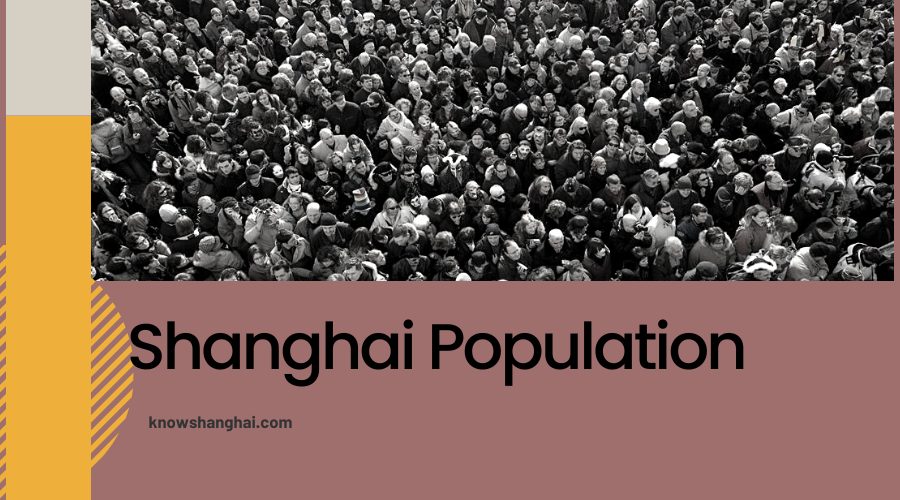Shanghai has a population of over 26.32 million people, making it the most populous city in China. It is also one of the most cosmopolitan cities in the world, with residents from all over the country and beyond. The city is home to many internationally-known brands, such as H&M and Lululemon, as well as many famous tourist attractions.
Shanghai, the most populous city on China’s central coast, is the global financial hub. The city’s population in 2022 is projected to be 26.32 million people, making it the world’s fourth-largest urban area. Shanghai occupies a strategic location at the heart of China and has been a leading economic center for over two centuries. The city is home to numerous multinational corporations and boasts a diverse culture and international reputation. Its key industries include finance, manufacturing, transport, tourism, education, and health care.
What is the population in Shanghai in 2024?
Population growth in China’s largest city is outpacing the national rate, as Shanghai continues to attract migrants from across the country. The current metro area population of Shanghai in 2024 is 29,868,000, a 3.98 increase from 2021. By comparison, the national population grew by 1.39% in that year. The metro area of Beijing continued to be the most populous city in China with a population of 19,364,000 as of 2020, but Shanghai overtook it as the most populous city in China with a population of 23,343,000 according to Chinese census data.
The reasons for this growth are manifold: shifting economic priorities and opportunities; rising incomes and standards of living across all social groups; an expanding pool of potential marriage partners; and increased mobility within China and beyond its borders (due to growing numbers of citizens who have acquired passports).
Population Density:

According to the latest census data released by the Chinese government, the population of Shanghai was 24.15 million in 2016. This is actually a decline of 0.4 years from 2015 and ranks first in China, ahead of Beijing which has 23.78 million residents. The city has been rapidly growing for many years now and it is estimated that by 2030 it will have a population of over 30 million people, making it one of the most densely populated cities in the world. However, with all this growth comes pressure on resources and there are concerns that the city’s infrastructure is not able to cope with such a large population. There have been reports of problems with sewage systems, traffic congestion, and pollution levels becoming increasingly severe. It is hoped that measures will be taken to address these issues as Shanghai continues to grow into one of China’s major economic hubs.
Shanghai City Size:

Shanghai is a large city with a total area of 6,340.5 square kilometers (2,448 sq mi). The majority of the land is flat, with a few hills in the southwest region. The tallest hill in Shanghai is Pingyang Hill at 264 meters (811 ft). The most common type of terrain in Shanghai is dry land, with only 6% of the city being composed of rivers and water bodies. Despite having a mostly flat landscape, there are several man-made hills located throughout the city. These hills were created to accommodate different types of industrial uses, including railway yards, military bases, and factories.
Shanghai Demographics
Shanghai is China’s largest city and its economic center. The city has a population of over 24 million people, making it the world’s third most populous city after Tokyo and New York City. Shanghai was founded in 1731 by the grandson of the last Ming Dynasty emperor and has been an important cultural and commercial center ever since. The city has undergone rapid development in recent years, with new skyscrapers, shopping malls, and luxury hotels being constructed. However, much of the old downtown area remains untouched, giving the city an eclectic feel that is unique among Chinese cities. Shanghai is known for its high levels of pollution, but there are also many parks and gardens where residents can escape the harsh climate.
Shanghai has always been a cosmopolitan city, with people from all over China migrating to the city for work or to start a new life. The vast majority of Shanghai’s residents are of Han Chinese ethnicity, with only 1.2 belonging to other ethnicities. In recent years, however, there has been an influx of people from other parts of China, including Xinjiang and Tibet. This is likely due to the increasing economic opportunities in Shanghai and the fact that many businesses in Shanghai are owned by foreigners.
Shanghai Population Growth

Shanghai, the world’s largest city by population, is projected to have a population of more than 20 million by 2025. The city’s rapid growth has resulted in significant challenges, including inadequate infrastructure and housing, air pollution, and strained resources. However, Shanghai is also benefiting from its status as a global financial center and leading manufacturing center.
Aging Society
The aging society is gradually becoming a reality in China. In the 1980s, only about 5% of the population was over 60 years old. However, by 2010, that percentage had increased to almost 10%. The reasons for this increase are many and complex, but one important factor is the country’s rapidly growing population. By 2050, there will be an estimated 400 million people over 60 years old in China, a figure that will represent more than 20 percent of the total population. The elderly will need more medical care and social support than ever before and their numbers will continue to grow faster than the rate at which new housing can be built to accommodate them.
Shanghai Population Data (Urban Area)
Shanghai is the most populous city in China and the world’s fourth most populous city. With over 21 million people living in the urban area, Shanghai is the country’s largest city by population. The population of Shanghai increased by 9.33% between 2010 and 2015, making it one of China’s fastest-growing cities. In addition to its growing population, Shanghai is also experiencing rapid economic development with a GDP of over $2 trillion as of 2015.
Shanghai Population Ranking & Density
Shanghai, China has the world’s largest population with over 21 million people. It is also the most densely populated city in the world with over 10,000 people per square kilometer. Shanghai was once a small fishing village and has since become one of the most important economic hubs in Asia. The city has been rapidly growing in recent years and is now considered a global financial center.
Shanghai History
One of the oldest cities in China, Shanghai was once known as the Venice of the East. Today, it is a bustling metropolis with a population of over 20 million people. The city has seen a great deal of change over the years, from its days as a trading center to its current status as one of China’s leading economic and cultural hubs. Here are some key facts about Shanghai’s history:
-Shanghai was founded in 1550 by Portuguese traders.
-The city became an important commercial center during the 17th and 18th centuries due to its position on the Grand Canal linking Beijing and Hangzhou.
-During World War II, Shanghai was occupied by Japan for more than four years.
-The city underwent massive reconstruction following the war, including the construction of skyscrapers and new roads.
Conclusions
In conclusion, the population of Shanghai is growing rapidly and the city is expected to have over 20 million people by 2020. With all this growth, it’s important for Shanghai to develop infrastructure to support its population and keep them safe. There is a lot of work to be done, but with the right policies in place, Shanghai can continue to grow and be a thriving global city.

























